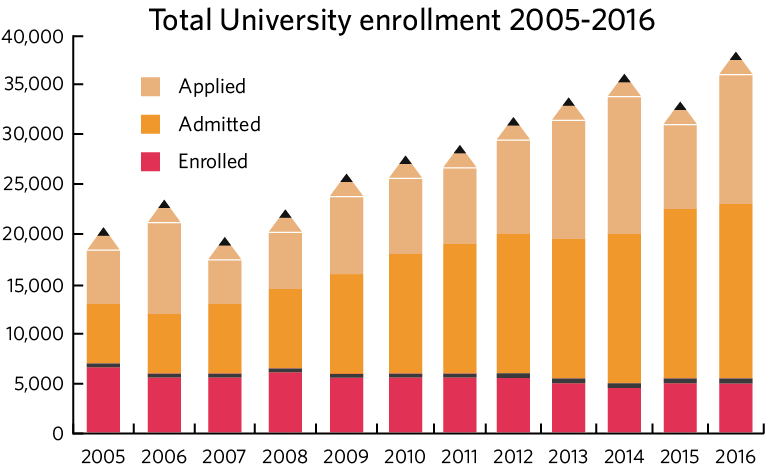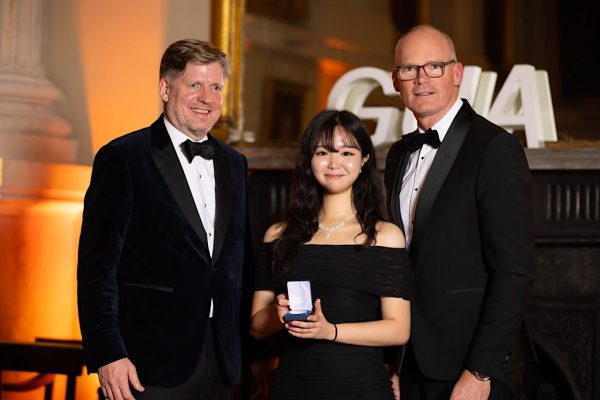Admission offers continue to increase, enrollment numbers remain stagnant
Oct 4, 2016
Last updated on Oct. 6, 2016 at 12:42 a.m.

More students are applying to the University than ever, but not as many of them are actually enrolling.
In 2015, a record number of 38,093 people applied to the University. This year’s freshman class is the largest ever at 7,593 students. But that represents only around 33 percent of those admitted.
Keith Marshall, associate provost for enrollment management, told the Senate Executive Committee Monday that the University does not have an applications issue or an admissions issue. Many students apply and many are qualified, but how many enroll is the concern.
“If we have any issue on this campus, it is a yield issue,” Marshall said. “It’s trying to get those students to choose to come here.”
Get The Daily Illini in your inbox!
This year, 43 percent of Illinois residents, 25 percent of domestic and 16 percent of international students who were admitted later enrolled.
Marshall said the low yields occur because prospective students now apply to many universities. It could also be attributed to the University’s high tuition, low financial aid model.
Financial aid is given on an equity-based level and most goes to programs like the Illinois Promise or the President’s Award Program. Colleges have around $13 million a year for financial aid, which is devoted to gaining high profile students and to building diversity in classes.
Campuswide, there has been a large increase of aid in the last eight years, spending around $70 million a year in aid.
Chancellor Robert Jones sees raising scholarship money as one strategy to making the University more affordable. He said he was surprised to learn that the University has not “been as successful as we would have liked to be” with generating scholarship donations. He plans to make it one of his priorities.
“You’ve got to raise attention to it. You’ve got to tell the compelling story that gets family members, donors and supporters of this institution to realize that that is one of our top priorities,” Jones said. “And we have to articulate it as a top priority and help people understand what the return on the investment will be.”
Six-year graduation rates gaps are closing in. Over the last 10 years, African-American and Hispanic graduate rates were much lower than White and Asian rates, but the gaps are getting smaller.
Around 21 percent of the 2016 freshman class are first generation students.
An enrollment management committee is studying how to increase the amount of degrees awarded by 10, 15 and 20 percent over the next six years. One of the largest ways is through online master’s programs.
Illinois has also become a leader in the Big Ten for serving students from their home state. It ranks third, below University of Rutgers and Nebraska, with 73.1 percent of students hailing from Illinois.
Over 3,300,000 print and digital communications were sent out to prospective students, such as emails answering questions or pamphlets.
The next Academic Senate meeting will be held Oct. 10 at 3:10 p.m. at the Illini Union. Senators will hear a brief presentation on enrollment management at the meeting.





